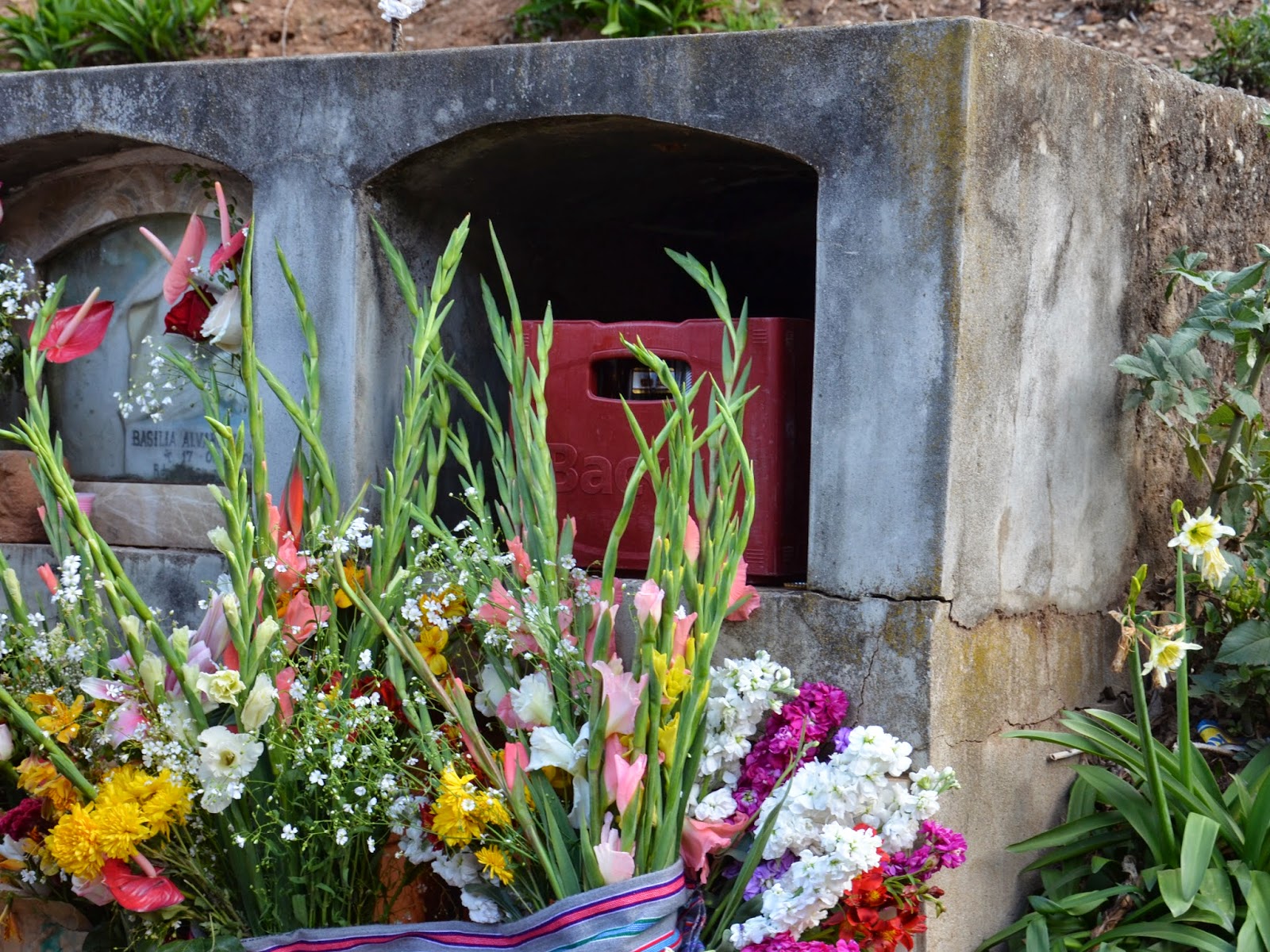Wszystkich Świętych to jedno z moich ulubionych celebracji w roku. Lubię tę nostalgię, specjalny czas by myśleć o bliskich, którzy, mimo że odeszli, wciąż mają znaczenie i wpływ na moje życie. Lubię atmosferę cmentarza po zmroku, listopadowy chłód ogrzewany przez setki zniczy.
Drugi listopada to Dzień Zmarłych i dopiero wtedy odwiedza
się cmentarz, który ożywa dźwiękami muzyki i entuzjazmem upojonych. Tłumy
wlekące na cmentarz skrzynki piwa początkowo trochę mnie zaskoczyły. Jednak
istnieje jakiś czar w tym, że na cmentarz przychodzą całe rodziny, piją piwo,
wspominają zmarłych, grają ulubioną muzykę zmarłych, w rytm której dzieci
tańczą na nagrobkach. Tutaj śmierć jest częścią życia, choć bolesną jak na
całym świecie, to trochę bardziej oswojoną. I bycie wśród zmarłych bez nadęcia
i obowiązkowej zadumy też ma swój urok.
Dziadek Piotr byłby zachwycony...
All Saints Day is one of my favourite holidays. I like the nostalgia, the special time devoted to thinking about the relatives that, even though passed away, still have importance and influence on my life. I like the atmosphere of the cemetery after the dusk, the coolness of November heated by hundreds of candles.
Having observed for last few months the customs of
Peruvians, their attitude towards God, faith and death (a skull dug out of the
decaying grave, hanging above the entrance door, which is supposed to bring
luck), the catholic devotion mingled with Inka superstitions and total lack of
respect to the Christian values, I could not wait for the Days of Deaths. Less
commercialized (except for the Halloween which, similarly to Poland, seems to
be a celebration just for the young and uninterfering with the tradition),
keeps more old customs. Even though here, as in Poland, two days are
celebrated, their meaning is quite distinct. The first of November is The Day
of the Alive, which is quite a surprising name considering that this is
supposed to be memorial of the death, but it is in fact a day, when souls of
those who passed away, come to visit those who stayed. The souls are therefore
entering the houses where their favourite food, especially sweets and drinks
are waiting for them on the table. It is said that if the dead tries some of
that food it does not have taste anymore, but we drank together with my
Peruvian host-sister some sweet dark beer „Cusqueña” left for her grandma and
it tasted just fine ;)
The second of November is the Day of the Dead and this is the day when everyone visits the graveyard, which is animated with the sounds of music and the cheerfull mood of people under the influence of alcohol. The crowds dragging the beer boxes to the graveyard surprised me a bit at the beginning. However, there is some charm in the fact, that whole families come to the cemetery, they drink beer, recall their descended ones, they play the favourite music of the dead, to the rhythm of which kids dance on the tombs. Here, the death is part of the life, and even though as painful as all over the world, a bit more domesticated. And being among the dead without sullen and obligatory reverie has its charm.
Grandpa Piotr would be delighted...
Nasza domowa czaszka/Our domestic skull
Cmentarz w La Paz/ Graveyard of La Paz
Cmentarz w La Paz/ Graveyard of La Paz
Cmentarz w La Paz/ Graveyard of La Paz
Cmentarz w La Paz/ Graveyard of La Paz
Cmentarz w La Paz/ Graveyard of La Paz









.JPG)
.JPG)
.JPG)

